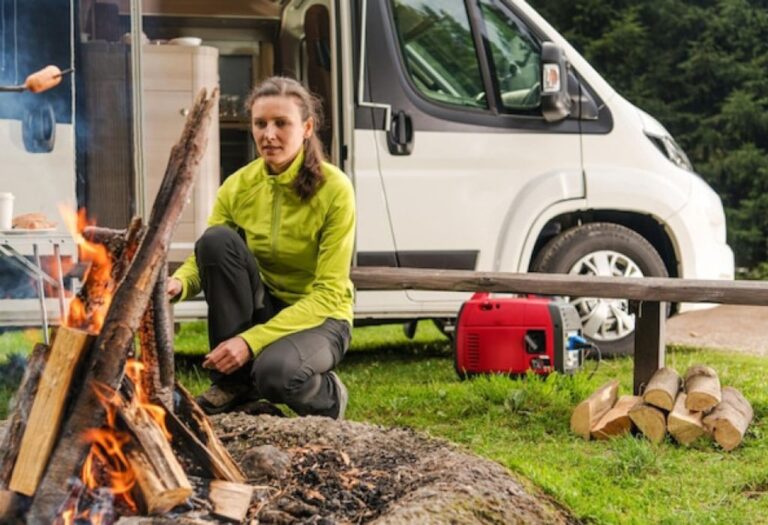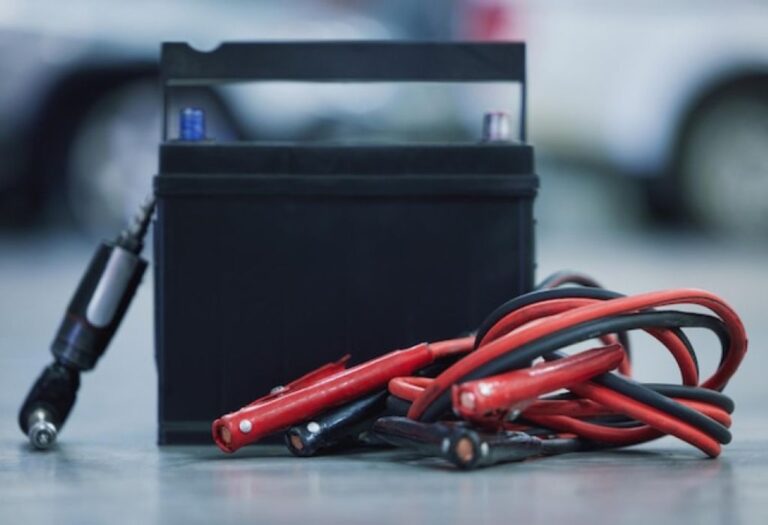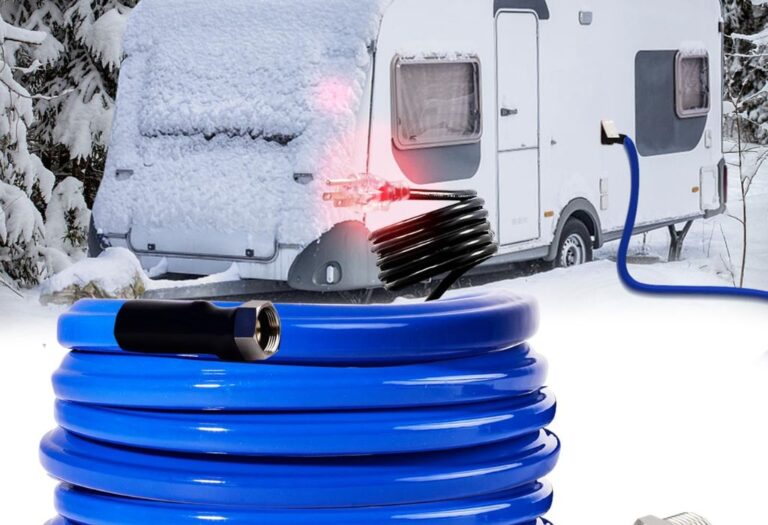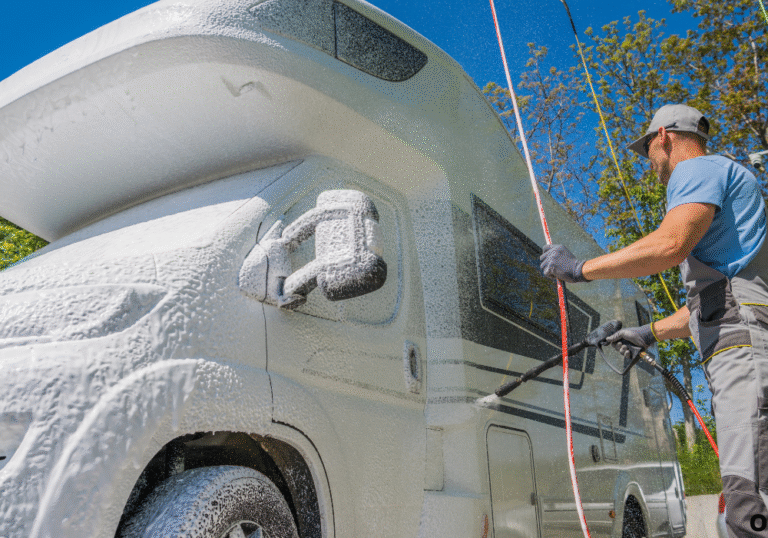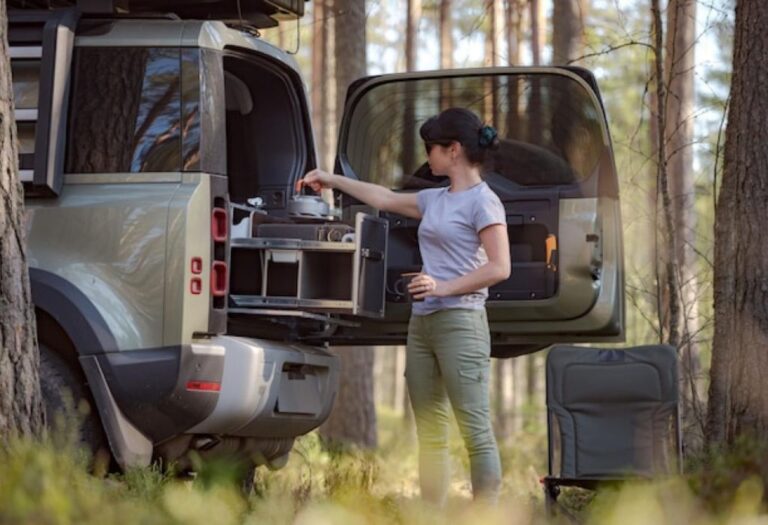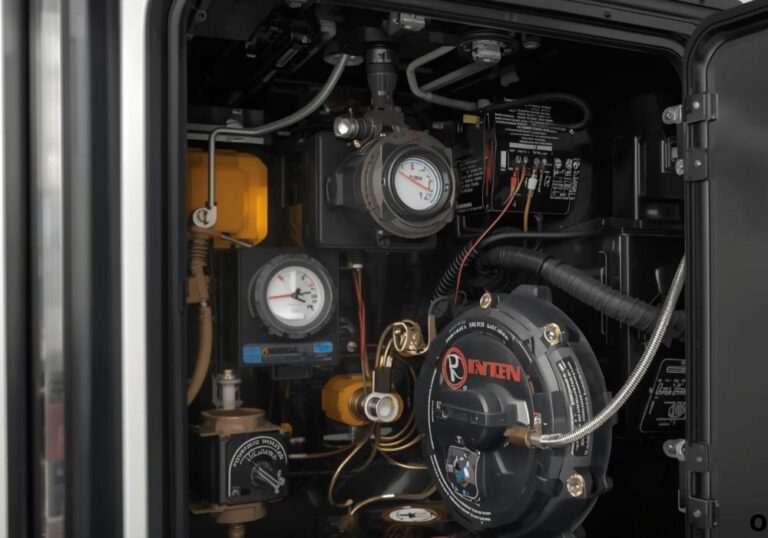How to Clean an RV Water Pump Filter Properly
Imagine starting an RV trip only to find that water trickles weakly from the faucet. Instead of refreshing showers or clean dishes, you are left with frustratingly low pressure.
This issue often traces back to a clogged RV water pump filter. The filter, designed to trap debris before it damages the pump, can quickly become dirty from sediment or minerals.
When ignored, a blocked filter can cause the pump to overwork, reduce flow, or even fail completely. The cost of replacing a damaged pump can reach several hundred dollars.
According to the RV Industry Association, nearly 11 million U.S. households own an RV and rely on safe, consistent water systems for travel [RVIA]. With so many users, maintenance is critical to prevent common failures.
Another study found that regular RV plumbing care can extend component life by up to 40% [FamilyHandyman]. Simple tasks such as filter cleaning save money and reduce breakdowns.
Fortunately, learning how to clean an RV water pump filter is straightforward. With a few tools and a short amount of time, the process restores proper pressure and protects the entire system.
This guide explains the steps clearly, highlights signs of filter trouble, and shares expert maintenance practices. Readers will walk away confident that their RV water pump is running smoothly.
What Is an RV Water Pump Filter and Why It Matters
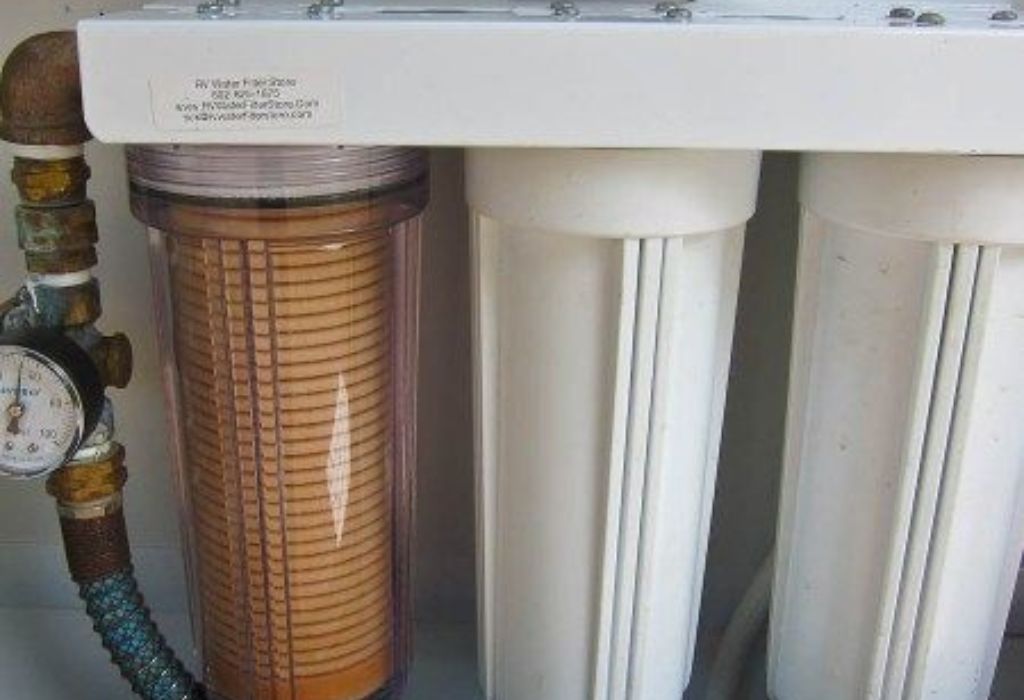
An RV water pump filter, also called a strainer, is a small but essential component in the freshwater system. It is placed at the pump’s inlet to capture debris, sand, and sediment before they enter the pump.
By preventing particles from reaching the pump, the filter helps maintain strong and consistent water flow throughout the RV. Without it, the pump can become clogged or damaged, leading to costly repairs.
Most filters come with a clear plastic housing that allows owners to inspect the screen quickly. This visibility makes it easier to spot dirt buildup or water discoloration before problems escalate.
Neglecting filter maintenance can reduce water pressure, cause the pump to overwork, and even shorten its lifespan. A simple cleaning routine protects the pump, improves efficiency, and ensures reliable water on every trip.
What does an RV water pump filter do?
It traps debris and prevents contaminants from entering the water pump.
Where is the filter located?
It is usually attached directly to the inlet side of the RV water pump.
How often should the filter be checked?
It should be inspected before every long trip and cleaned at least once a month.
Can a dirty filter damage the pump?
Yes, a clogged filter forces the pump to overwork, which may cause premature failure.
Are all RV pump filters the same?
No, they vary by brand and model, but most function using a mesh screen inside a clear housing.
Signs and Symptoms That the Filter Needs Cleaning
Low water pressure is the most common sign that an RV water pump filter is clogged. Faucets may sputter or flow unevenly as debris blocks the intake screen.
Another warning sign is when the pump runs constantly but fails to maintain steady water flow. Continuous operation stresses the pump and drains the RV battery faster.
Leaks around the filter housing can also indicate that debris buildup is affecting the O-ring seal. Even a small crack or poor seal can cause dripping water inside the RV.
If water appears discolored or carries small particles, the filter may be overdue for cleaning. Ignoring these signs risks system contamination and potential pump failure.
How do I know if my filter is clogged?
Check for reduced pressure, sputtering faucets, or suction noises from the pump.
Will the pump run constantly if the filter is blocked?
Yes, restricted water flow forces the pump to keep cycling without building pressure.
Does a clogged filter affect water quality?
Yes, dirty filters may allow sediment or particles into the system.
Should the filter be inspected mid-trip?
Yes, quick checks during trips prevent sudden failures on the road.
Can leaks signal filter issues?
Yes, leaks from the housing often mean the filter is clogged or the O-ring is compromised.
Tools and Materials Needed
Cleaning an RV water pump filter requires only a few basic supplies. A soft brush, clean bucket, towel, and gloves are essential.
It is also smart to keep a spare O-ring and plumber’s grease on hand. These items ensure a proper seal during reassembly.
Some RV owners use diluted vinegar for light cleaning. However, avoid strong chemicals that can damage the housing or rubber components.
What tools are absolutely necessary?
A soft brush and clean water are usually enough to clean most filters.
Do I need spare parts?
Yes, spare O-rings and even a replacement screen are recommended.
Can I use bleach for cleaning?
Diluted bleach can sanitize but should be rinsed thoroughly to protect the pump.
Do I need a wrench?
Most filter housings are hand-tight and do not require special tools.
Should I wear gloves?
Yes, gloves protect hands from debris and cleaning agents.
Step-by-Step: How to Clean an RV Water Pump Filter
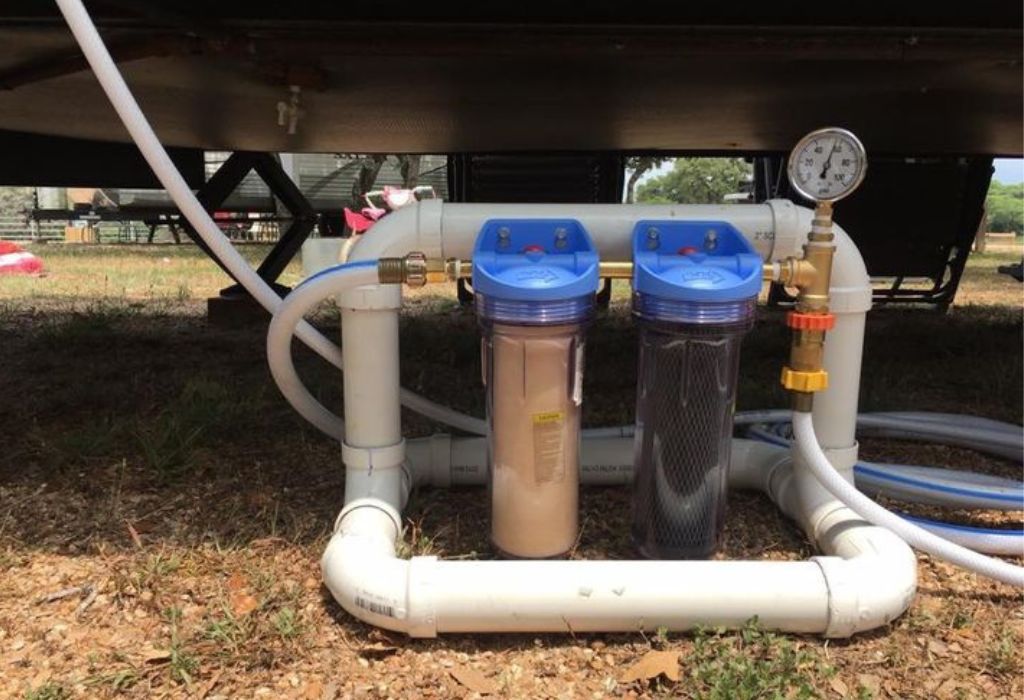
The first step is to turn off the water pump and open a faucet to relieve pressure. This prevents sudden water bursts when the filter housing is removed.
Next, place a bucket or towel under the filter to catch any spilled water. Even small amounts of water can create a mess inside the RV.
Unscrew the clear housing from the pump inlet carefully. Twist slowly to avoid damaging the threads or cracking the plastic.
Remove the mesh screen or cartridge inside. Inspect it closely for dirt buildup, cracks, or signs of wear.
Rinse the filter screen under running water until debris is removed. A soft brush may be used to loosen stubborn particles.
Clean the filter housing thoroughly. Ensure no sediment remains that could affect sealing.
Examine the O-ring for cracks or dryness. Replace it if worn, and apply plumber’s grease to maintain flexibility.
Reinsert the filter screen and screw the housing back onto the pump. Tighten gently by hand until secure.
Turn the pump back on and run water through the system. Check carefully for leaks and confirm normal water pressure.
Will water spill when I remove the housing?
Yes, a small amount will spill, so keep towels and a bucket ready.
How often should this process be done?
At least once a month or before every extended RV trip.
What if the screen is damaged?
Replace the screen or purchase a new filter housing.
Can I just replace instead of cleaning?
Yes, but cleaning is simple and extends the life of the filter.
What if leaks appear after reassembly?
Check the O-ring, reseat it properly, and ensure the housing is tightened correctly.
Preventive Maintenance and Best Practices
Routine maintenance keeps the water pump running at peak efficiency. A regular schedule of filter cleaning avoids surprise breakdowns.
Using an inline pre-filter at the water hookup reduces sediment before it reaches the pump. This small step prevents frequent clogging.
Flushing and sanitizing the fresh water tank improves water quality and reduces debris accumulation. Regular sanitation also prevents bacterial growth.
Winterizing the RV correctly protects the filter from freezing damage. Always drain or remove the filter housing before storing the RV in cold climates.
How often should filters be sanitized?
Sanitize the system at the start of each season and after long trips.
What is the best way to prevent debris?
Install an inline pre-filter between the hose and RV water inlet.
Should filters be removed during winterization?
Yes, to prevent cracks from freezing water.
Do I need to lubricate the O-ring every time?
Yes, a light coat of plumber’s grease extends its life.
Is filter maintenance expensive?
No, cleaning is nearly free and replacement parts are inexpensive.
Troubleshooting Common Problems
Leaks after cleaning often come from a misaligned or cracked O-ring. Replacing the seal usually solves the problem.
If water pressure remains low even after cleaning, the pump or lines may be clogged elsewhere. Inspect hoses and fittings for hidden blockages.
Cracks in the filter housing are often caused by freezing water or over-tightening. Once cracked, the housing must be replaced.
Excessive debris inside the filter can signal a dirty fresh water tank. In that case, sanitize and flush the entire system.
Why is the filter leaking after cleaning?
The O-ring may be worn, cracked, or incorrectly seated.
What if water pressure does not improve?
The issue may lie in the pump or water lines, not the filter.
Why does the filter keep filling with debris?
The fresh water tank or source may be contaminated.
Can a cracked housing be repaired?
No, it should always be replaced for safety.
How to avoid constant clogs?
Use a pre-filter and sanitize the tank regularly.
When to Replace the Filter or Pump
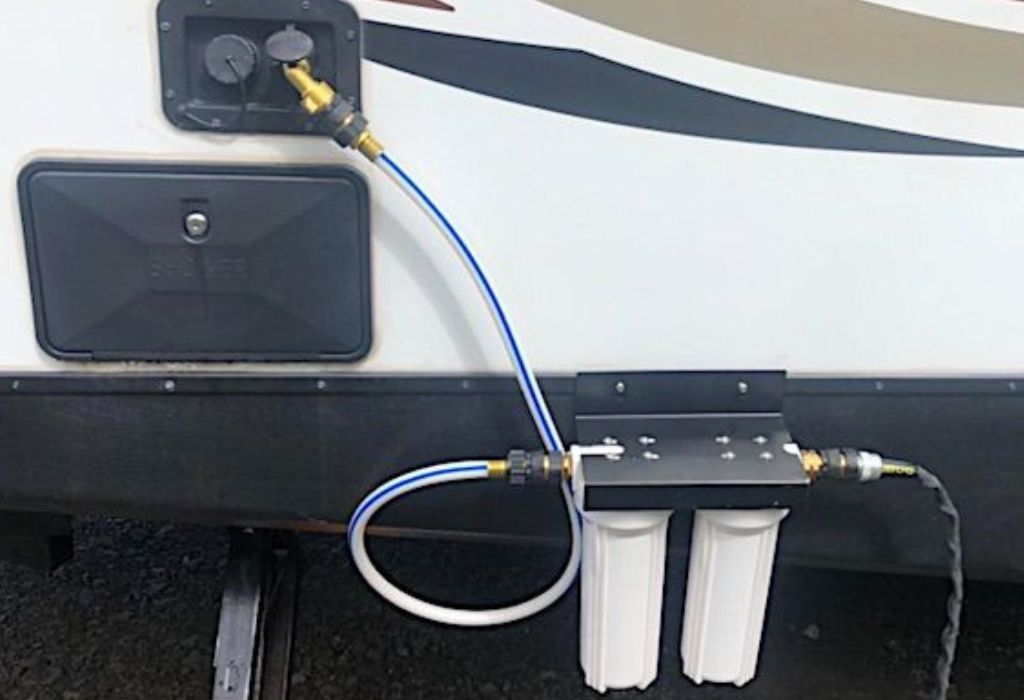
Filters eventually wear out even with regular cleaning. Torn mesh, cracks, or discoloration are clear signs that replacement is needed.
A new filter housing is inexpensive compared to the cost of a failed water pump. Replacing early avoids costly damage.
Upgrading to a higher quality filter may also improve water clarity. Just ensure it matches the pump’s flow capacity.
If the pump itself shows signs of damage, such as noise or failure to pressurize, replacement may be necessary.
How can I spot a cracked housing?
Look for hairline cracks or leaks during operation.
Can a faulty filter ruin the pump?
Yes, restricted flow can overwork and damage the pump.
What is the average replacement interval?
Every 1–2 years depending on usage and water quality.
Is upgrading to a finer filter worth it?
Yes, if water sources are often dirty and the pump can handle reduced flow.
When should the pump itself be replaced?
When it no longer builds pressure or shows signs of mechanical failure.
Conclusion
An RV water pump filter may be small, but it plays a critical role in system performance. A clean filter ensures proper water flow, protects the pump, and keeps the RV’s plumbing reliable.
Routine cleaning prevents costly repairs, extends pump life, and improves water quality. Knowing how to clean an RV water pump filter gives every RV owner confidence on the road.
The next trip will be more enjoyable when the water system works smoothly. Make filter cleaning part of a regular maintenance routine and travel worry-free.
I’m David R. Coleman, the founder, lead writer, and lifelong tool enthusiast behind GarageToolPro.com. With years of experience in automotive repair, woodworking, and home DIY projects, I created this platform to share practical tips, detailed tool reviews, and step-by-step guides that help mechanics, hobbyists, and homeowners get the job done right the first time.

